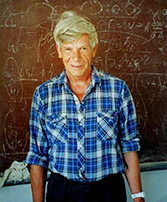Speaker
Description
The dominant radiative transitions of the charmonium low-lying excited states as well as strong decays of a heavy exotic charmonium-like state have been studied within a covariant quark model by involving the analytic confinement concept. We use the compositeness condition to eliminate any constituent degrees of freedom from the space of physical states and strictly fix the renormalization couplings of the hadron states. The helicity amplitudes, or the Lorentz structures, have been used to express the gauge invariant transition amplitudes of the processes under consideration. Only one adjustable parameter common for the charmonium states $\eta_c({}^1\!S_0)$,$J/\psi({}^3\!S_1)$, $\chi_{c0}({^{3}}\!P_{0})$, $\chi_{c1}({^{3}}\!P_{1})$, $h_c({^{1}}\!P_{1})$, and $\chi_{c2}({^{3}}\!P_{2})$ has been introduced to describe the quark distribution inside the hadron. This parameter is proportional to the ratio between the charmonium's "size" and its physical mass. In doing so, we keep other basic model parameters. Then, we calculated the fractional widths of one-photon radiative decays for states $J/\psi({}^3\!S_1)$, $\chi_{cJ}({^{3}}\!P_{J}),~J=\{0,1,2\}$ and $h_c({^{1}}\!P_{1})$. Our estimated results are in good agreement with the latest data [1].
We have also investigated the strong decay of the exotic charmonium-like state $Y(4230)$, recently reported by the BES-III collaboration. Hereby, the decay modes $Y \to J/\psi \, \pi^+ \pi^-$ and $Y \to J/\psi \, K^+ K^-$ have been considered by interpreting $Y(1^{--})$ as a four-quark hadron. The preliminary results on the decay widths of the processes under consideration are reasonable.
[1]. G. Ganbold, T. Gutsche, M.A. Ivanov, V.E. Lyubovitskij, \
{\it 'Radiative transitions of charmonium states in the covariant confined quark model'}, \
Phys. Rev. D 104 (2021) 094048.

